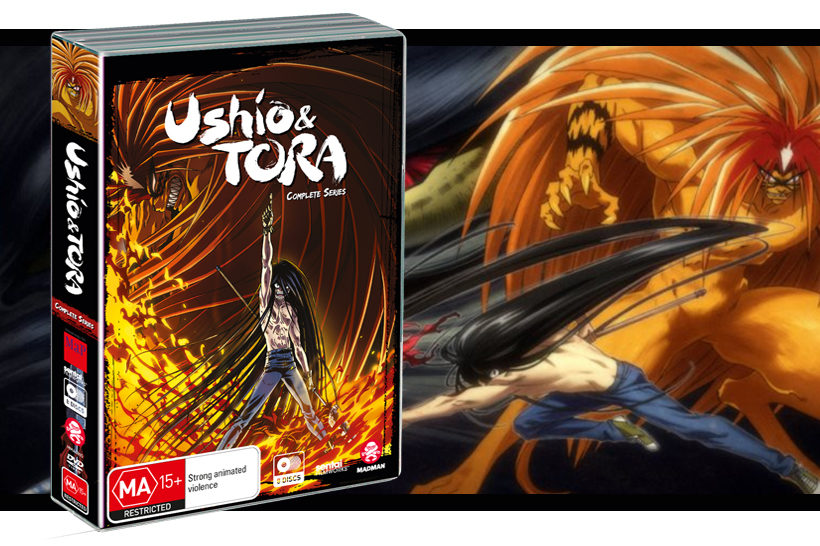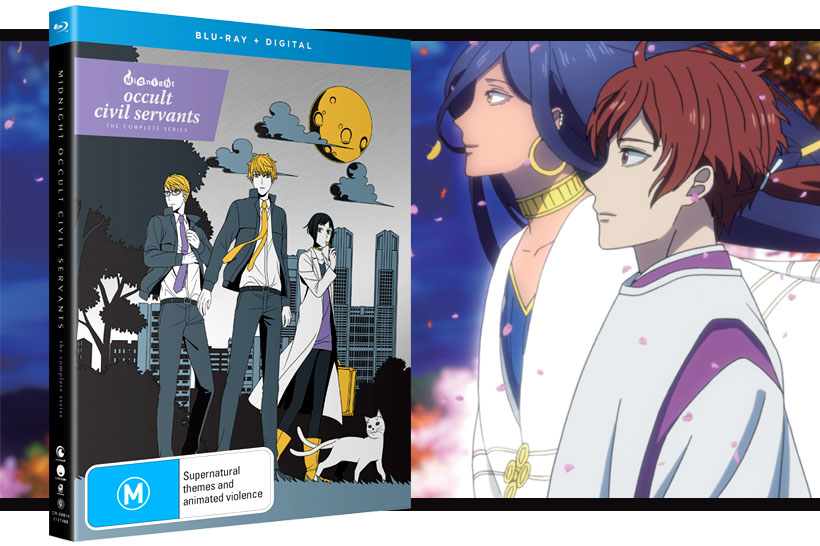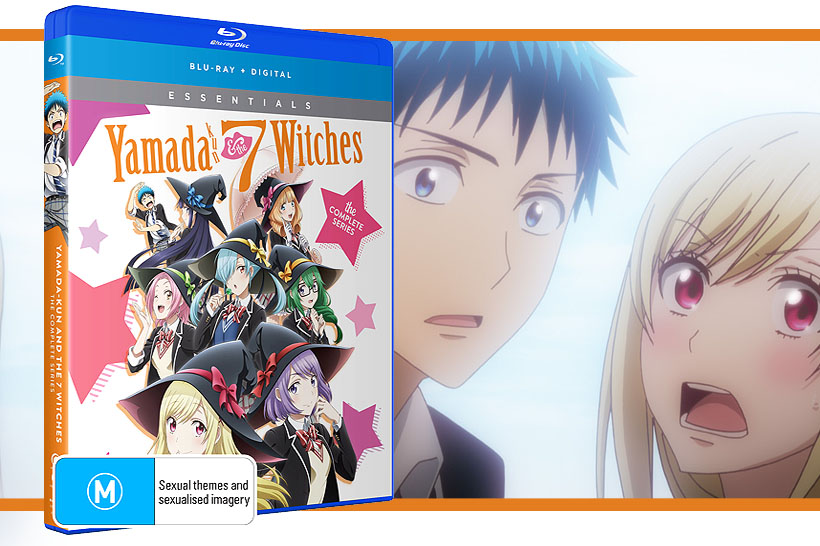Ushio Aotsuki is an average middle school student of the anime variety – he gets into fist fights with his dad over petty arguments, is incapable of ignoring people in need, and has several friends who show their affection for him by being as violent and tsundere as possible. If that wasn’t enough, Ushio also lives with his father on the grounds of the Fugen’in temple, which houses a legendary weapon known as the Beast Spear, a weapon that can destroy monstrous yokai. Ushio is sceptical of this story until he finds Tora, a large tiger-like demon, who has been imprisoned in the basement of Fugen’in by the legendary spear for 500 years. Although Ushio initially does the smart thing and ignores the violent Tora, their chance encounter leads to an increase of yokai in the town and puts Ushio’s friends in danger. With nothing else to do but free Tora in exchange for his help, Ushio inadvertently becomes the wielder of the Beast Spear. The two form a tentative team, with Ushio struggling against all manner of deadly yokai while Tora begrudgingly assists him, promising to one day eat Ushio for all the trouble he’s put him through.
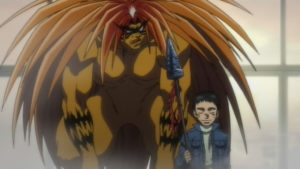
Ushio and Tora is perhaps one of the most quintessentially shonen anime I have seen in recent years. It has an old-school action series aesthetic, from the designs of characters and yokai, to the colours used in the animation. Topped off with a supernatural premise, this means the show is packed full of rough and gory fights, as well as monster designs seemingly pulled straight from a particularly feverish nightmare from the 90s. The narrative also feels a little bit old-school, early on the series assumes a ‘monster of the week’ type narrative, but as the characters and world settle into place it changes trajectory and becomes all about the preparation of the final battle with destruction and fear incarnate, Hakumen no Mono. Given that Ushio and Tora was originally a manga whose first volume was released in 1990, this visual and narrative style is also endearingly nostalgic, allowing the show to stand out visually among its peers while also calling attention to the ways anime has changed over the years. This distinct visual style means that Ushio and Tora is an anime with very few soft edges and lots of hard lines, but surprisingly this doesn’t completely extend to the characters. Many of them are certainly crude, apathetic, or violent, but plenty of them also display tenderness and affection.
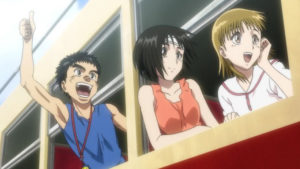
Ushio is kind of a generic shonen anime boy, but probably the best kind of generic shonen anime boy. He is endlessly compassionate and willing to put the needs of others above his own, whether it be jumping into muddy waters to fetch someone’s hat, or take a hit meant for someone else just to spare them the pain. This selfless aspect of Ushio is balanced by his sometimes clueless nature and bouts of selfishness, but most of his character is devoted to these mostly generic chosen one tropes; he inspires others with his speeches on innate goodness and overcomes any narrative obstacles or self-doubt with the power of friendship™ and doing what is right. It’s a tried and true character arc, and it definitely makes Tora come across as the more interesting and nuanced character. Tora is gruff, and always dismissing any sort of emotion that he perceives as weak, constantly asking himself why he doesn’t just eat Ushio and be done with it. But as crude and violent as Tora is, his softer moments and attempts to adapt to the world after 500 years sealed away make him incredibly likable. Most importantly, his story is the most engaging and complete character arc of the series, with an interesting backstory that ends up complimenting Ushio’s fantastically as he changes from a creature hellbent on eating Ushio to a friend whose strength he can count on in battle. It’s an apt metaphor for the entire series, as Ushio on his own is perfectly serviceable as a character, but paired with Tora his story is much more engaging.
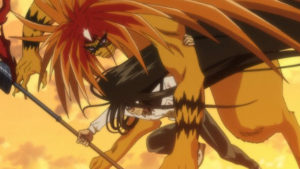
It is also worth mentioning that basically all of the characters in Ushio and Tora play an important narrative role. They don’t merely serve as singular plot points to teach Ushio and Tora a lesson – they exist beyond single episodes and play important roles throughout the series, culminating in their individual roles in the final battle against Hakumen. A good example of this is Ushio’s friend Mayuko, who not only ends up befriending Tora, but is also revealed to play a much larger role that is connected to the history of the Beast Spear. Many of the yokai who aren’t outright evil also fit this description, like the two Kamaitachi siblings Raishin and Kagari, who appear in several episodes beyond their introduction episode and contribute to the overall arc of Ushio and Tora. I’m honestly surprised that the series balances all these characters so well, giving the show a feeling of inter-connectedness with all the characters, both human and yokai. Overall, this gives Ushio and Tora the feeling of a great epic, which is complimented by the release of both seasons in one complete set, with 39 episodes in all. I can’t honestly say the series is completely airtight, and not all minor arcs are solid, but it’s still an impressive balancing act. On that note, I do feel that it’s worth mentioning that like most other shonen series, Ushio and Tora portrays several of its female characters in uncomfortable ways. There are multiple times throughout the series where Ushio’s school friends are shown naked, and while the camera does not pan over their bodies and it avoids most stereotypical fanservice tropes, it still exists. At one point, Mayuko is even kidnapped bya yokai and is shown to be naked the next time we see her. Again, it’s generally not explicit, but it occurs often enough to be an unnecessary and off-putting element in an otherwise fun anime.
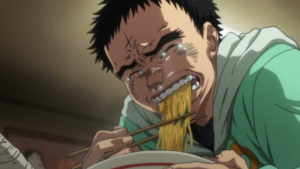
While both the Japanese and English voice acting is well done, the Japanese audio tends to be more intense and creepy, particularly when it comes to the yokai, and ESPECIALLY when it comes to Hakumen. Hakumen in English is evil, Hakumen in Japanese is absolutely chilling, and I’d recommend watching the sub of Ushio and Tora for complete immersion. As I said, both versions are good, but the English dub feels like it’s courting the nostalgic themes of the show by imitating a 90s anime dub, and some of the unintentional hilarity that entails. In the end it is up to personal preference, and I found both versions were satisfactory in different ways.
Ushio and Tora is an intensive but fun nostalgia trip that manages to balance multiple characters and steer them towards an epic final battle. The designs range from impressive to outright disturbing, and people interested in Japanese yokai and supernatural elements will find a lot to love. If you enjoy shonen, Ushio and Tora is as shonen as it gets, and should definitely be on your watch list.
©Kazuhiro Fujita,Shogakukan / Ushio to Tora Partners

